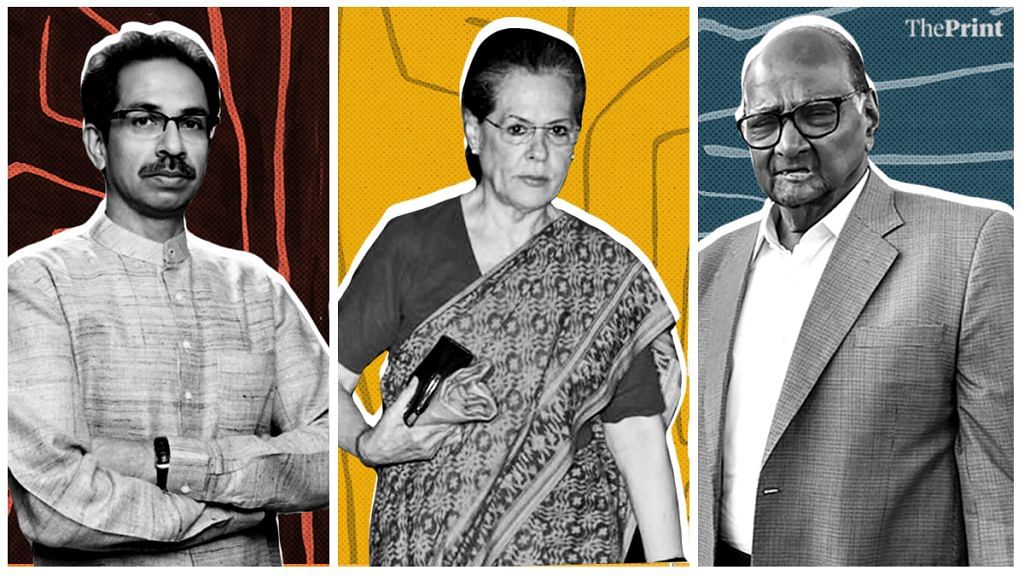New Delhi: This Sunday will mark a month since results to the 21 October Maharashtra assembly elections were announced, but the state remains without a government.
The BJP-Shiv Sena alliance won a clear majority in the 288-member house, but the two partners have since broken ranks over the terms of their tie-up.
The Shiv Sena wanted the chief minister’s chair for half the term, and the BJP refused. This has led the Sena to examine a tie-up with arch-rivals Congress and the Nationalist Congress Party (NCP) as alternatives.
Maharashtra, meanwhile, has been placed under President’s Rule amid the prevailing uncertainty.
While the Maharashtra situation is unique in which a pre-poll alliance collapsed after elections to trigger a standoff, it’s not the first time state government formation has dragged on for weeks after elections.
There have been two other instances in the past decade.
Delhi, 2013
The Aam Aadmi Party (AAP) made its electoral debut with the 2013 Delhi assembly polls. The elections were held on 4 December and results declared 8 December.
It wasn’t until 28 December, however, that AAP chief Arvind Kejriwal was sworn in as chief minister.
The delay can be attributed to the fractured mandate thrown up by the elections — out of the union territory’s 70 assembly seats, the BJP won 31, AAP 28 and Congress eight.
Though the Congress was nearly wiped out — Kejriwal beat Congress stalwart and former chief minister Sheila Dikshit by a margin of nearly 22,000 votes — it offered outside support to the AAP, which then formed the government on 28 December.
However, Kejriwal resigned 49 days later, on 14 February 2014, after his party’s anti-corruption legislation failed to get support in the House. Fresh elections were held and, exactly a year later, Kejriwal was sworn in as chief minister again. This time, his party won an absolute majority with 67 seats.
Also read: Not just Shiv Sena and NCP, BJP too didn’t get extra time from governor to form govt
Jammu & Kashmir, 2014
The erstwhile state of Jammu & Kashmir saw its last assembly election in late 2014, a five-phase exercise between 25 November and 25 December.
Results, announced on 28 December, brought a fractured mandate, with the Kashmir-based Peoples Democratic Party (PDP) winning the highest number of seats, 28, in a house of 87. The BJP, which commands strong support in Jammu, won 25.
The state was subsequently placed under Governor’s Rule for nearly two months between January and March 2015.
By then, the BJP and the PDP — polar opposites ideologically, especially regarding the relationship between Jammu & Kashmir and India — had devised a common minimum programme to form a shock coalition that ultimately proved fragile. On 1 March, PDP founder Mufti Mohammad Sayeed was sworn in as chief minister.
Another stint of Governor’s Rule ensued after Sayeed’s death on 7 January 2016, which pushed the alliance into fresh uncertainty. The PDP, now led by Sayeed’s daughter Mehbooba Mufti, wanted the central government to talk to separatists and the controversial Armed Forces Special Powers Act (AFSPA) partially revoked.
However, the alliance was back on track following a meeting between PM Modi and Mehbooba.
On 4 April 2016, Mehbooba was sworn in as the state’s first woman chief minister. However, the vast differences in the parties’ ideologies took a toll and the coalition collapsed for good last year.
One of the reasons the alliance fell apart was the BJP and the PDP’s fear of contesting the 2019 general elections as partners, a prospect that could have put off their respective voters.
Another reason was that the BJP was already planning to act on its manifesto promise and revoke Article 370 and Article 35A from J&K, which it did on 5 August this year. The two constitutional provisions provided the state with special privileges and were seen by Kashmiris as a condition of their accession to India. The PDP, therefore, wanted the two articles to stay in place.
After the alliance broke, Mehbooba said it had been “like drinking a cup of poison”.
The state has since been bifurcated into two union territories.
Maharashtra standoff
The BJP and the Shiv Sena’s alliance cracked over the latter’s demand for a 50-50 power-sharing agreement, including for the chief minister’s chair.
After they failed to come to a consensus, the BJP, which won the biggest share of seats, was invited by the governor to form the government. But they refused since they didn’t have the numbers.
The Shiv Sena, the second-largest party, was then invited to stake claim and given a day’s deadline to come up with the numbers. Sena chief Uddhav Thackeray met with the NCP and the Congress to formalise a coalition despite their ideological differences, but they couldn’t arrive at a decision in time. Sena’s Eknath Shinde and Aaditya Thackeray met the governor to request for an extension, but it was not granted. The party then moved the Supreme Court against the governor.
NCP chief Sharad Pawar’s party faced a similar fate when invited by the governor to stake claim. Amid this chaos, the state was put under President’s Rule.
Talks between the Shiv Sena, the NCP and the Congress continue.
Also read: Congress-Sena-NCP? Data shows parties forming unnatural alliances don’t dump ideologies
